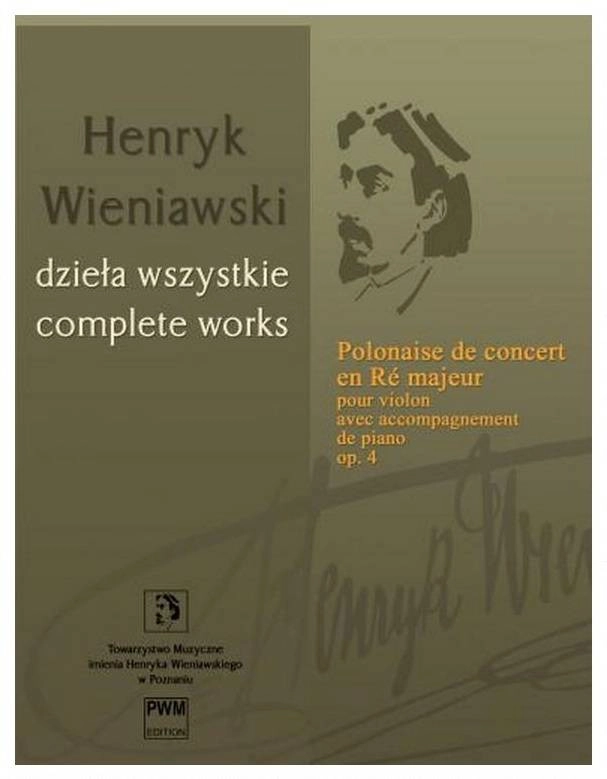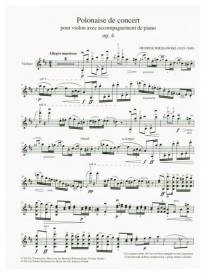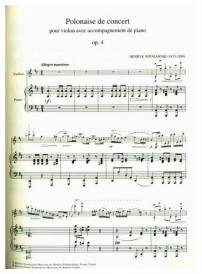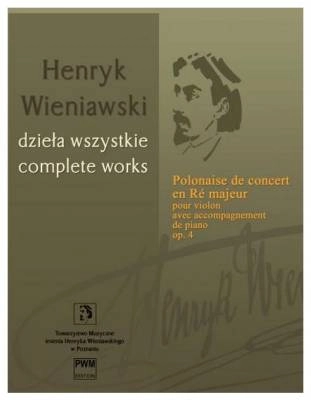Opens in a new window
PWM Edition Polonaise de concert en R majeur Op. 4 - Wieniawski - Violin/Piano

Additional Photos:


- Author/Composer:
- WIENIAWSKI, HENRYK
- Instrumentation:
- VIOLIN
- Model #:
- 150221
Format: Softcover
Instrumentation: Violin with piano accompaniment
The Polonaise de concert, Op. 4 is the first of two polonaises composed by Henryk Wieniawski. The original version of the Polonaise de concert was inspired by Karol Lipinski, to whom it is dedicated. It was in the autumn of 1848. When Wieniawski made the first draft of the Polonaise, in 1849, he had not yet learned the principles of counterpoint and harmony. He graduated from Joseph Lambert Massarts class at the Paris Conservatoire.
The Polonaise was composed in two versions: for violin with piano accompaniment, and for violin and orchestra. Also at this time, Wieniawski composed the Adagio lgiaque, Op. 5, which he recommended performing before the Polonaise, and both pieces were played in March 1853 in one of a series of nine concerts in Vienna.
The design of this Polonaise is a cross between reprise form and rondo form. The main section (A) comprises the segments a, a1, b and a, of which the eight-bar theme (a) clearly fulfils the role of a dynamic, powerful refrain. The middle section displays more lyrical expression in its themes and phrases, but it is varied in character, featuring virtuoso elements: harmonics, double notes, leaps, broken triads in dotted rhythm and ornaments. The refrain theme also appears, confirming the rondo scheme. A new figurational theme divides the last appearance of the main theme-refrain and the virtuosic coda.
Wieniawski played his polonaises quite often. They are still popular today with artists and audiences alike and are among the composers most frequently recorded works.
Q & A
There are currently no questions for this product.
Reviews
There are currently no reviews for this product. Be the first to write one!




